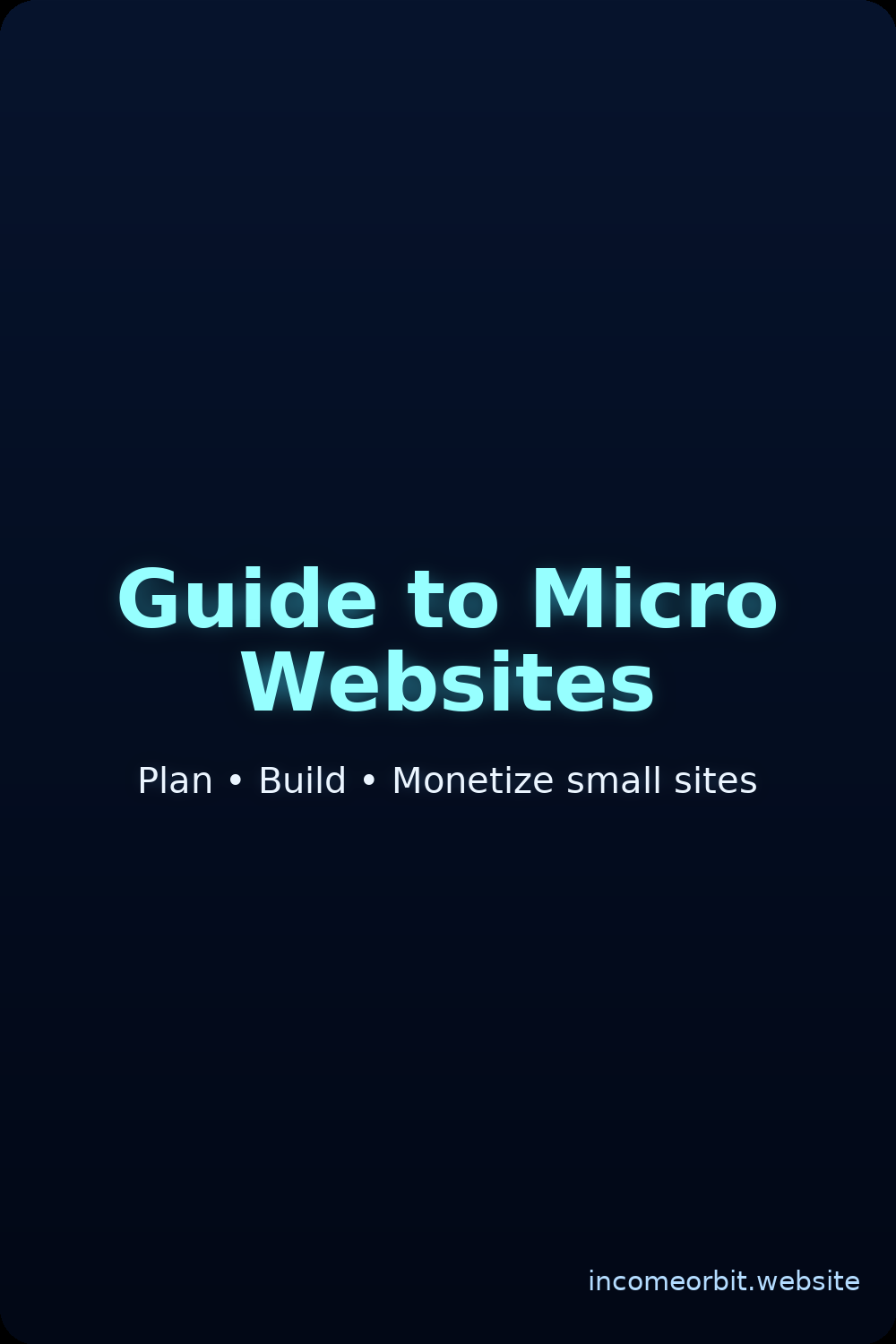
The Ultimate Guide to Micro Websites (2025)
This guide to micro websites helps beginners launch a small, focused site that ranks fast and converts with minimal overhead. You’ll cover niche selection, lean publishing, internal links, and simple monetization.
Step 1 — Choose a small, winnable niche
Look for buyer intent + low competition. Brainstorm 5–10 long-tail queries around one clear problem.
- Examples: “best password manager for families”, “simple rank tracker for beginners”.
- Capture working queries and link targets in your outline.
- Do it fast: Find Easy Keywords (Beginner’s Guide)
Step 2 — Set up domain & basics
Use fast hosting with free SSL and backups. Keep URLs short and readable; enable sitemap and clean permalinks.
Checklist & stack: Micro Website Tools.
Step 3 — Publish core pages
- Home: value proposition + CTA → example
- About: who you help and why → example
- Contact: simple email or form → example
Step 4 — Create 2–3 high-intent articles
Use a repeatable outline: H1 (query), short intro, H2 (benefits/steps), H2 (comparison/alternatives), CTA to your offer or Tools page.
Helpful examples:
Build a Micro Website in 7 Days,
RankMath vs Yoast,
Mangools SEO Tools
Step 5 — Monetize smartly
- Start with one aligned affiliate offer (e.g., Mangools).
- Add a simple digital product (checklist/templates) once traffic grows.
Step 6 — Analytics & iteration
Track pageviews, time on page, and outbound clicks. In Search Console, find queries where you sit at positions 6–15 and improve those pages first.
Rank tracking: a lightweight tracker keeps you focused → Best Simple Rank Tracker.
Internal linking map
Every new post should link to:
- Tools Page (stack/monetization)
- Orbit Blog (hub)
- One related post (and receive a link back to this guide as the pillar)
Next steps
- 🚀 Launch checklist → Start Guide
- 🧰 Our stack → Micro Website Tools
- 📘 Learn the basics → What Are Micro Websites?
FAQ
What is a micro website?
A micro website is a small, highly focused site built to rank fast for specific keywords and convert visitors with minimal overhead.
How many pages should a micro website have?
Most start with 3–5 core pages (Home, About, Contact, Tools, plus a blog hub) and grow to 5–40 pages.
Can micro websites make money?
Yes. By targeting low-competition keywords and monetizing with affiliates or simple digital products, micro websites can generate income quickly.
Affiliate notice: we may earn a commission at no extra cost to you.
